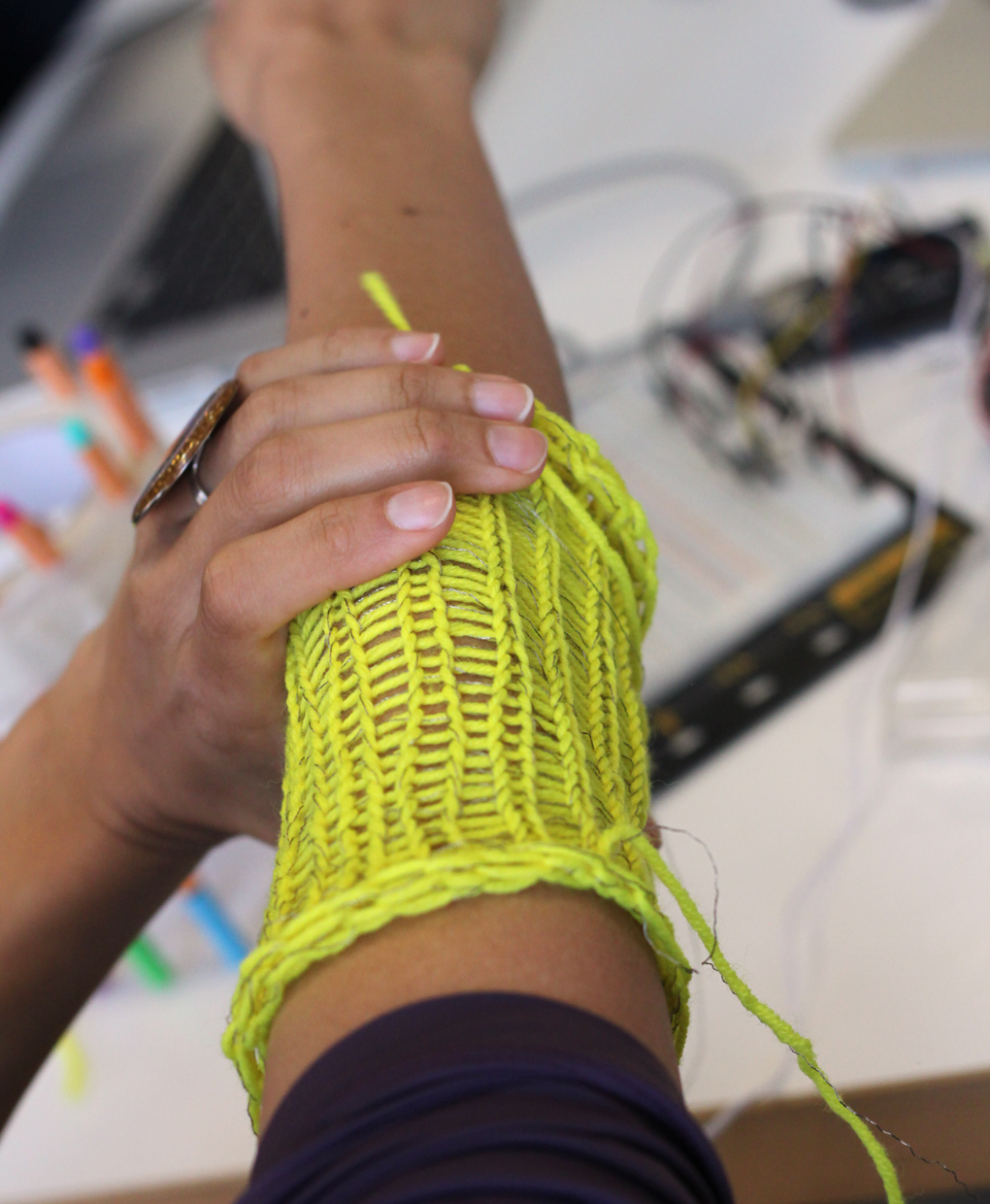Sensor Hacklab
Course | 2016

Sensor Hacklab was a course that my friend and colleague Darsha Hewitt used to give at the Bauhaus University in Weimar for the Media Art & Design students. In spring 2016 she was away from Weimar and asked if I could give the course, to which I happily agreed. As the course focused on sensors, we experimented with different kinds of ready-made and DIY sensors using the Arduino microcontroller boards. Altogether nine students with backgrounds ranging from photography to textile design and architecture participated in the course, which lasted three weekends.



Exploring sensors
During the first weekend we learned some Arduino microcontroller board basics regarding reading sensors and making lights blink and speakers beep. After this we explored in small teams a mysterious pile of materials ranging from shiny yarns and fluffy wool to glittery sheets and foamy pieces. The task was to decipher with the help of multimeters whether the stuff was suitable for making a sensor and what kind of electrical properties it had. I had sneaked in some materials, which shimmered alluringly, but were of no use to sensors. However, the students were not easily fooled, as multimeters revealed the conductivity of the materials.



Projects with sensors
The second weekend broadened the horizon of sensors, as we delved into further circuits, which enabled using the sensor inputs for controlling RC servos, gear motors, RGB LEDs and toys. The students were also planning their projects, which would in one way or the other incorporate sensors. The third weekend was then mostly about taking the student's ideas further into functioning prototypes, which could be later extended into installations and other works of art. Some students had already at this point quite a clear idea what they wanted to build. For example, Christian had been making various experiments with matrices and was working on a carpet, which could trigger sounds when stepped on. Rachel, on the other hand, was hand-crafting delicate origami structures, which she was planning to turn into a wall that reacts to viewers' movements. There were also further interesting explorations related to themes such as fire, living plants, textiles and pinballs.
See also:
Thank you!
Many thanks to Darsha, Professor Ursula Damm and other Bauhaus University personnel for the invitation and warm welcome to Weimar. Big thanks also to Christian and Tim, who helped out with the course. Lastly, thanks also to all the students who participated in the course and made it a fun experience.